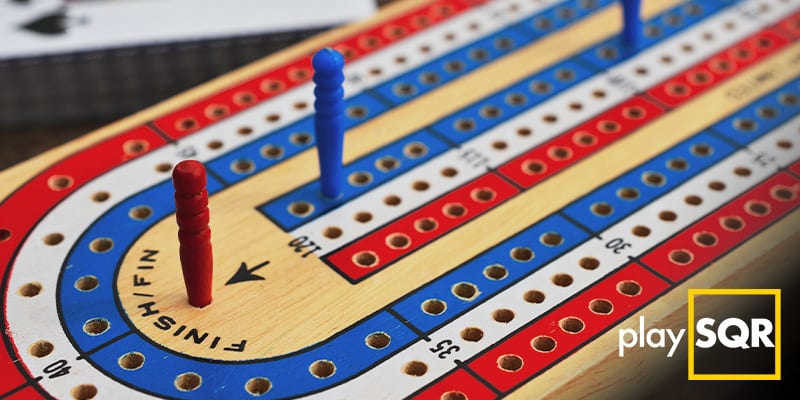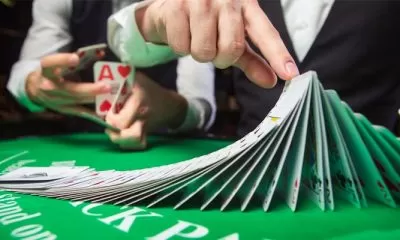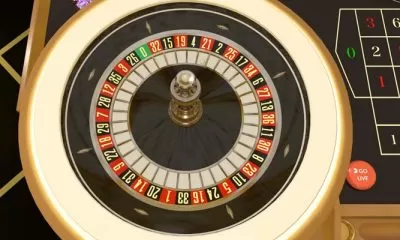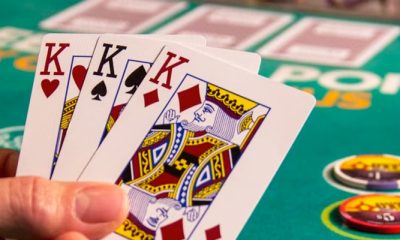Casino
How to Play Cribbage: A Comprehensive Guide to the Game, Scoring, and Card Strategies
Published
6 months agoon
By
Sam Jonson
Cribbage is a classic card game that is the perfect choice to play with friends or family. You can play this game with the help of cribbage boards. You race your pegs around the board by playing cards and earning points. The game is yours to win when you cross the finish line before your opponent.
Sounds fun? Let’s learn more about how you can play this game!
The Basics of Playing Cribbage
First things first. You need to know the basics of cribbage:
- Cribbage is a game of two players. You can play it with three or four people by playing two against two as partners.
- You need to use the standard 52-card pack.
- Count your scores according to the rank of the cards- K, Q, J, 10, 9, 8, 7, 6, 5, 4, 3, 2, A. With K being the highest and A being the lowest.
- You can play the game with the help of a rectangular wooden cribbage board. Count your scores through pegging which reduces any error in counting scores.
- Take turns playing the cards from your hand and adding the card values for the round. You score if you play a card that makes a total of 15 or 31.
- Earn points by having cards that total 15, making pairs or flushes, and creating sequential cards. You need to move your pegs around the board to track your score.
- You win the game if you are the first player to reach 121 points.
What is the Use of the Cribbage Board?
The cribbage board has four rows comprising 30 holes each, divided into two pairs of rows by a central panel. The board comes with four or two additional holes that are situated near one end. This is known as the “game holes.”
There are four pegs, usually two in contrasting colours. If you choose a continuous-track cribbage board, it will have two to three tracks and a continuous line of 121 holes for each player. You can also get these boards with 180 holes.
Place the board between two players where each player takes two pegs of the same colour. Each time a player scores, they can advance a peg along a row on their side of the board. You can count one peg per count. Use the two pegs and the rearmost peg to jump over the first peg when you get an increment in score. After another increase in score, use the peg behind to jump over the peg in the front to show your new score.
The traditional method of playing is you “go down” or away from the game holes and to the outer rows and “come up” on the inner rows. A game of 61 is considered “once round” whereas a game of 121 is “twice round.”
If you do not have any cribbage boards around, use a piece of paper and mark:
- Units 1, 2, 3, 4, 5, 6, 7, 8, 9, 10
- Tens 10, 20, 30, 40, 50, 60
Substitute the pegs with small coins or buttons to count in each row.
What are the Steps of Playing Cribbage?
The scoring of Cribbage is usually different from other card games. Similarly, you need to be aware of the certain rules and the steps to play it:
Step 1: Take two pegs of the same colour and put them at the start of the track so that one peg is in front of the other. Have the other player do the same thing. If you do not have a board at home, use pen and paper to track your score.
Step 2: Shuffle your 52-deck cards and set it on the table. Now take turns cutting the cards and revealing the bottom card of the section you picked up. Whoever has the card with the lowest value becomes the dealer while the other player becomes the “pone.”
When a card is drawn from a well shuffled pack of 52 cards and it is Kings, you get the highest-value cards whereas aces have the lowest value. However, if you have the same value cards, shuffle the deck once more and repeat the process.
Step 3: After this step, shuffle the deck two or three times and deal six cards to each player. Deal one card at a time, starting with the pone. Set the rest of the deck next to the boards once you finish dealing. You can look at your cards, but keep them hidden from the other players.
Step 4: Check your cards and pick out two cards you do not want to keep in your hand. Set those cards face-down in front of the dealer to form their “crib.” This is an extra hand that’s hidden and scored at the end of each round. Keep the four leftover cards in your hand.
The scoring takes place at the end of each round for pairs, runs, and the sets of cards that total 15 in your hand. Remember, try to keep the cards that will score points in your hand.
Step 5: Let the pone player cut the deck and reveal the top card on the lower portion of the deck. This card is known as the “start card.” Set this card on top of the deck face-up so that all players can see it.
Both or pair players can use this start card to create combos and score points with their hands. If the start card is a Jack, the dealer immediately scores two points, known as “his heels.” You get to move the peg furthest back on your track so that you have many spaces ahead of the front peg.
Step 6: The pone player starts the game. Choose one card from your hand and set it in front of you. State its value to start the “count” for the round. Face cards have a value of ten and aces have a value of one.
Step 7: After you play a card, add its value to the running total from the rest of the cards played. Do not mix the cards with the other players and keep them in a separate pile. You can slightly overlap your cards to keep a count of what cards you’ve already played.
So, if your opponent starts with a 2 and you play 3 on your turn, say “5” as the new total. In this stage of the game, only the values of the card matter.
Step 8: If you cannot play a card without going over the limit of 31 points, tell the other player “go.” This acts as a signal to say you forgot the current count. If you played the last card closest to 31, you scored one point.
Note that, if any player has cards left, flip the cards that have been left face-down and then start the counter over at 0. Continue taking turns with the player who said “go.”
Step 9: Create combos to earn more points. Pay attention to the cards your opponents play and take note of the extra pegging points. Whenever you score a point, take your peg that’s in the furthest back and move it ahead of the one that’s in front.
This method allows players to see the last amount they scored. And this is how you can score:
- When a played card brings the count to 15= 2 points.
- If the last card played makes the total count 31= 2 points.
- If you make a matching pair of the last card played by your opponent= 2 points.
- If your opponent has another matching card 6 points.
- If you can play the 4th card of the same value, you move forward by 12 points.
- If you play a card that helps in completing the sequential run of cards= An extra 1 point for each card in the run. The order of the cards does not matter.
- If you play the last card for the round= 1 point.
- If you get a flush= 4 points
- Flush + start card in the same suit= 5 points
- Jack’s that the same suit as the start card= 1 point
Step 10: When playing cribbage, if you flipped any cards face-down during the round, flip them face-up again so that everyone can see them. If you are the dealer, keep your crib face-down. Check if all four cards in your hand are of the same suit to earn points for a flush.
Step 11: After you count the points in your regular hands, set them aside and flip the cards in your crib face-up. Count the points from your crib and use the start card to make combos if you can. Move the peg forward to mark your points.
Step 12: You can switch dealers after each round. Make the pone the dealer in the next round. So, in the new round, the other player will have a crib so each player earns points from the same number of hands.
Put all cards face-down and shuffle your deck. Deal out another hand of 6 cards and select the ones you want to add to the crib. Keep playing the game until someone crosses the 121 mark on their track. If you want to play a shorter game, you can play until 61 points.
If you won, the other player earned between 61-90 points and they are considered “skunked.” If their score is below 60, then they’re considered “double skunked.”
What are the Different Combination Counts You Can Use?
Every combination of two cards that make a pair, of two or more cards that make 15, or of three or more cards that make a run, count separately. Ace is always low and cannot form a sequence with a King. Also, a flush cannot happen during the play of the cards. It only occurs when the hands and the crib are counted.
You need to remember certain formulations to count better. For pairs and runs alone:
- A triplet= 6 points
- Four of a kind= 12 points
- A run of three, with one card duplicated (double run)= 8 points
- A run of four, with one card duplicated= 10 points
- A run of three, with one card triplicated (triple run)= 15 points
- A run of three, with two different cards duplicated= 16 points
You score a perfect 29 playing card which is the highest possible score for combinations in a single cribbage deal.
Wrapping Up
Thus, learn how you can create combinations by utilising different variations of this card game. Remember that you can say “muggins” if you forget to count any point in the hand or while pegging, however, your opponent will score a point. Try to lead from a pair and or with a four because your opponent cannot use these cards to score a 15 in the next round. Take your chance and score when your opponent leads a card that can be par or make 15.
You may like
-
High Low Game: How and Why to Play, Variations, and Strategies
-
Live Speed Baccarat: Game Rules, How to Play, and Strategies
-
A Comprehensive Guide to Play Poker Online with Friends
-
How to Play Roulette: Everything You Need to Know about Casino Roulette Game
-
Play Online Roulette Successfully: 6 Proven Strategies to Help You Win
-
Learn How to Play 3 Card Brag













